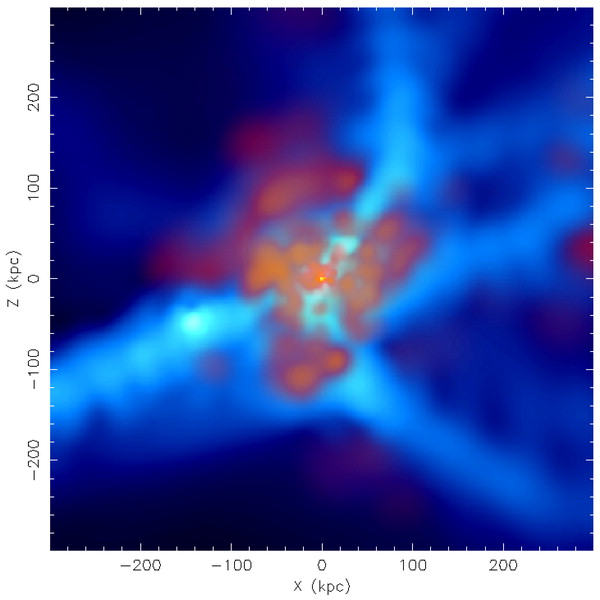
Simulated galactic outflow, transporting metals into the intergalactic medium. The galaxy sits at the convergence of intergalactic filaments (light blue). The composite image shows the gas density (in blue) and the metallicity distribution (in orange). Note how the metal rich gas avoids the filaments and escapes from the higher density regions into the voids, choosing the path of least resistance. This is one of the reasons why it is difficult for galactic winds to disturb the general filamentary intergalactic medium. Observations of QSO metal absorption systems indeed appear to show more widespread metal enrichment than such late time winds can produce. In reality, the blue filaments are themselves already enriched, suggesting that these metals originate in an earlier phase of galaxy formation and, at the time we observe them, are falling in rather than coming out of those galaxies. In addition, it is not clear whether such long range winds as assumed in the above model really exist. (simulation and figure by D. Kawata).